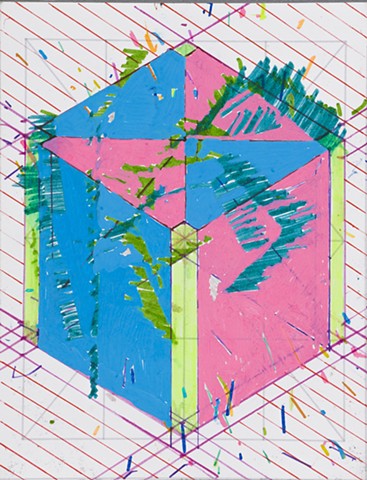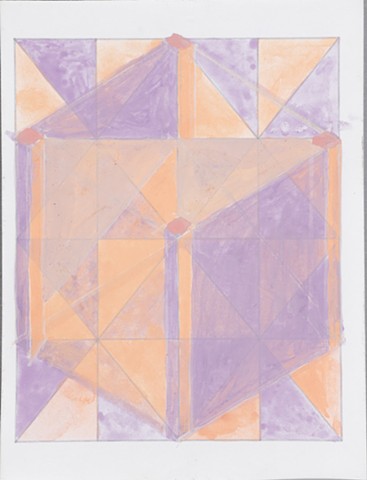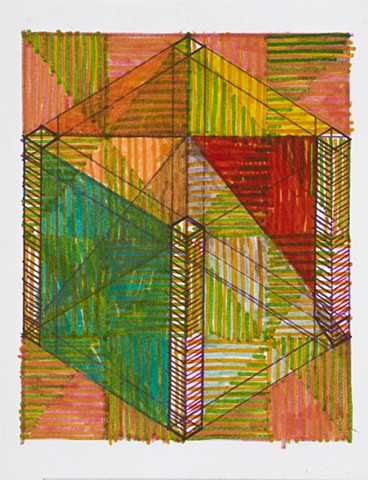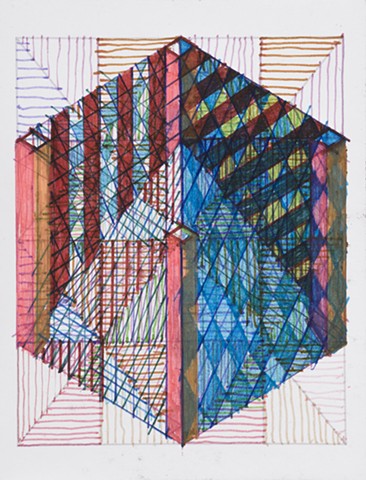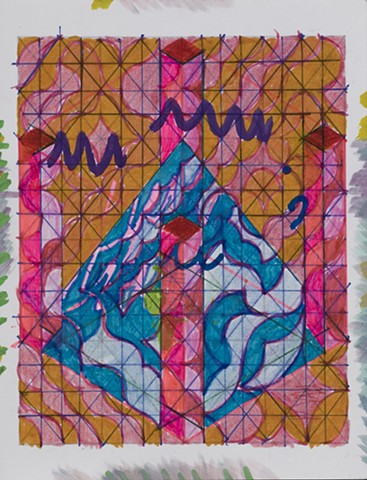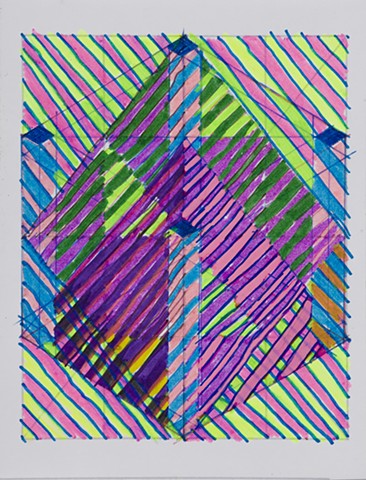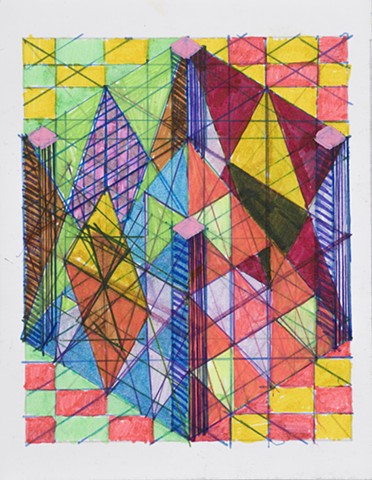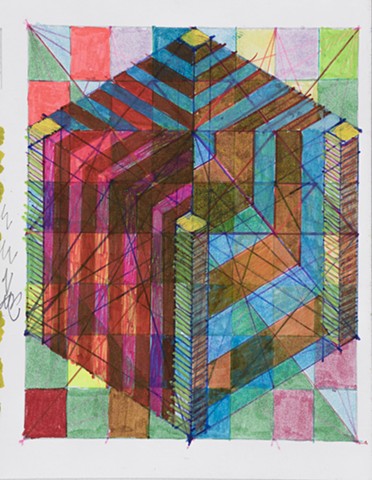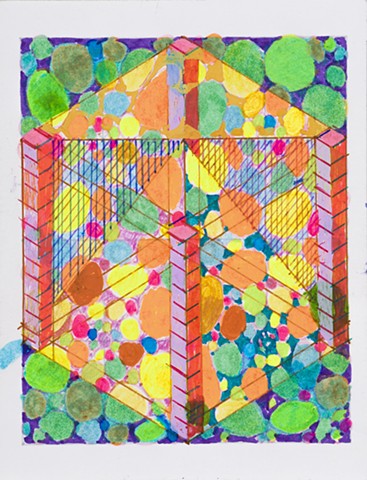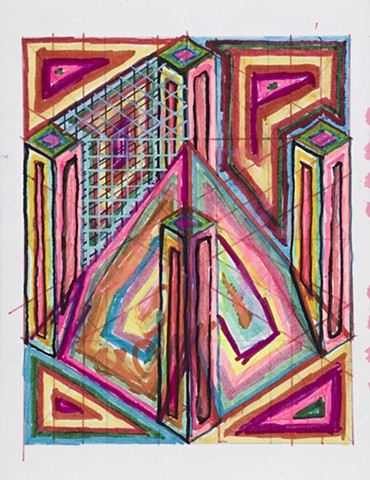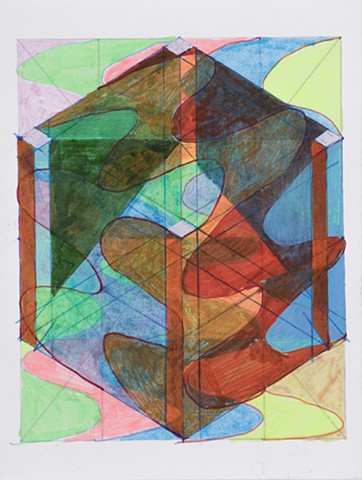Ein Würfel ist ein Rechteck (A Cube is a Rectangle)
Ein Würfel ist ein Rechteck is a series of drawings I started in the summer of 2022.The title is a rephrasing of “a cube is a rectangle” in German. I thought it was ironic that my starting point for each drawing looks a bit like a Belgian waffle, and that waffle and Würfel read similarly in English, my native language. My partner Holly and I were traveling in Austria in the summer of 2022 and that’s where the title came from.
The central imagery is a cube bisected by a pyramid (prism), with four towers (one at each corner of the cube) and the Boolean intersection that these six volumes together produce. Another title for this work is “Boolean Cubes” but I prefer the Würfel designation.
All the Würfels from this series are drawn on Bristol Vellum 270 gsm in ink and acrylic and cut to 5.5”H by 4.25”W. The matrix is drawn in ink by an Axidraw drawing machine (robot). Initially I avoided patterning the “background,” aka the triangles cut off behind the cube but after seeing the architectural patterning in Stein I began filling in the ground entirely prior to drawing the cubes (most of the time).
This establishes a friction between figure and ground from the outset and helps me to engage with push and pull between different types of visual polarity. These images show a few of the recent grounds. Each one is a puzzle I that set myself to solve through the process of drawing. Not knowing the final outcome is an important part of this project.
Each drawing begins with a matrix of 16 rectangles that follow a ratio of 3.65H:3W. They are arranged in a grid format and each rectangle is bisected into triangles alternating from top left to bottom right and top right to bottom left.
From this matrix an “isometric cube” (aka a hexagon) can be produced by drawing lines between points A, B, C,D,E and F. Coincidentally we found similar patterns on buildings in Stein an Austrian town on the banks of the Danube this summer.
Deleuze argues that repetition is not mere replication but a means of producing difference. I use pattern and repetition in my drawings and sculptures to align with this concept. Each repeated element introduces a variation, a slight difference that accumulates to create a complex whole. This mirrors Deleuze’s assertion that repetition in art produces newness and novelty, contributing to the viewer’s cognitive engagement with the artwork. The rhythmic patterns invite viewers to explore the nuances and subtle variations, fostering a deeper cognitive involvement.











